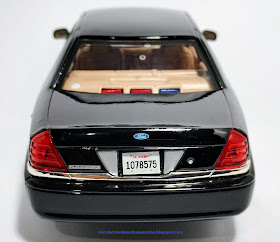The Ford Crown Victoria (or simply Crown Vic) is a rear-wheel drive full-size sedan that was marketed and manufactured by Ford from the 1992 to the 2011 model years over two generations. Discontinued in the 2011, the latter day Crown Victoria had been in production since 1991 at Ford's St. Thomas Assembly plant in Talbotville, Ontario, Canada. Dropping its previous LTD prefix, Ford instead revived a nameplate once used on a two-door version of the Fairlane sold in the North American market for the 1955 model year.
The Crown Victoria shared the Ford Panther platform and major powertrain and suspension components with the Lincoln Town Car and Mercury Grand Marquis. Along with its rebadged Mercury and Lincoln variants, the Crown Victoria was the final full-frame rear-wheel-drive passenger sedan produced in North America. The durability associated with its layout popularized the use of the Crown Victoria with taxicab and fleet owners to be one of the most commonly used police patrol/pursuit vehicles in North America (where from 1992-2012 Crown Victorias were mostly sold and used as taxicabs and police cars).
















































